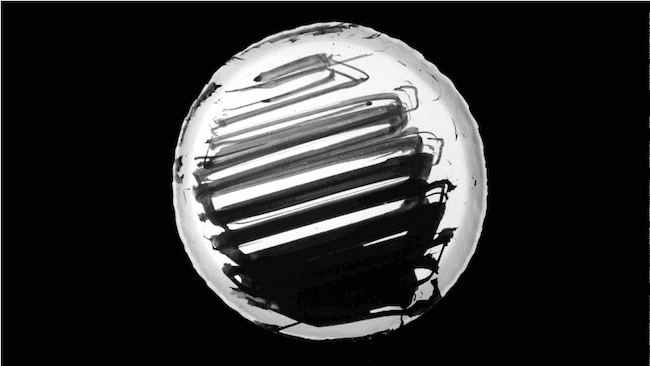Designer Adam Chau works between the United States and the Netherlands. According to his biography, he received a degree in studio ceramics and tries to blend industrial production with traditional craft practices.
“Digital Calligraphy” is a 2014 project by Chau. He designed porcelain plates with the aid of a CNC machine. CNC machines are computer-controlled manufacturing devices used in things such as lathes, mills, routers and grinders.
Chau equipped one of these machines with a handmade brush. With jet black glaze, the computer creates the design seen in the video above.
Above image: Screenshot of “Digital Calligraphy,” a project by Adam Chau.
Any thoughts about this post? Share yours in the comment box below.

I am often puzzled when I see technology used as a poor substitute for actual content. As a ceramic designer and ceramic artist, I embrace the use of new advances in our field be they CNC routers, digital printing, etc, when and if appropriate to what I am designing and making.
If these plates are presented a “blending of industrial production with traditional craft practices” as stated above, they really have nothing to do with industrial production at all. What I see is a fairly traditional plate albeit with marks left on it’s edge by perhaps 3D print of that plate or not finishing that edge if the plate were slip cast and left overturned after dumping the slip. I see an attempt at a calligraphic representation made by a computer with a handmade brush. The glaze marks left on the surface have nothing to to with calligraphy at all. They are just bad marks made by a computer.
The rush to embrace these advances in making objects without really understanding what the technologies can do is misplaced energy, time, and even perhaps wasted money. Just because it is possible to use a CNC machine to create a model, use a digital printer to make the plate if equipped with ceramic printing media, is not a substitute for sound design principles, methodologies, or techniques. Use of a handmade brush and then having a computer create a design with a jet black glaze has little or no content. It is only using technology for technologies’ sake, and nothing more.
In contrast, a recent cfile article presented Olivier van Herpt’s printed ceramic vessels. This artist totally understands the technology that he is working with. Not only has designed and built a 3D printer for these large forms, but the forms exploit the technology. Herpt “gets it”. I am sorry to say that Chau does not.
Baloney.